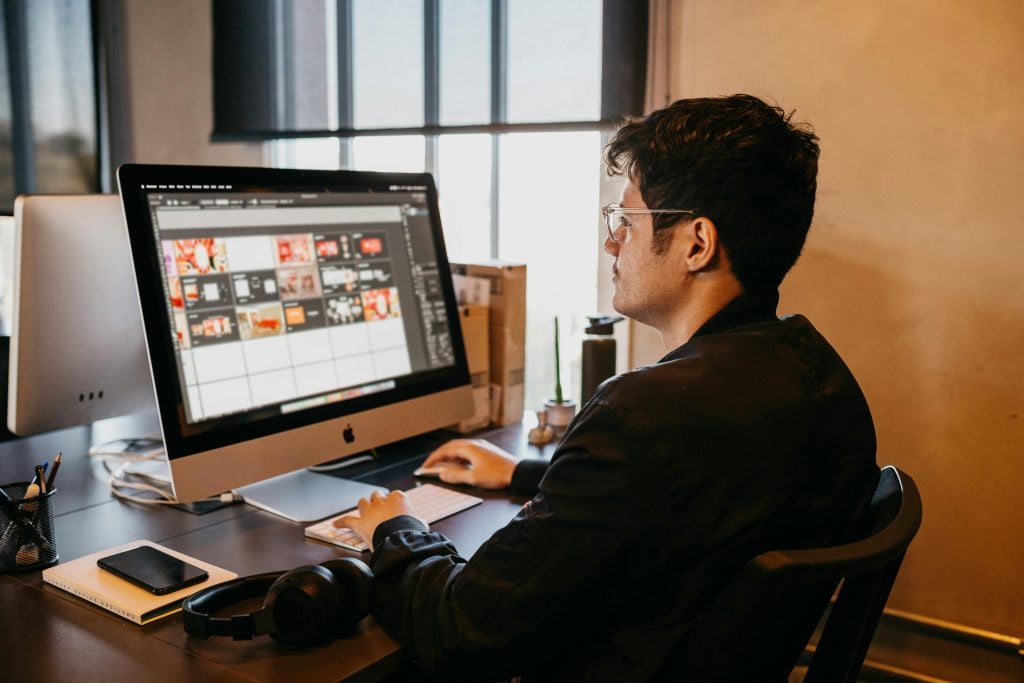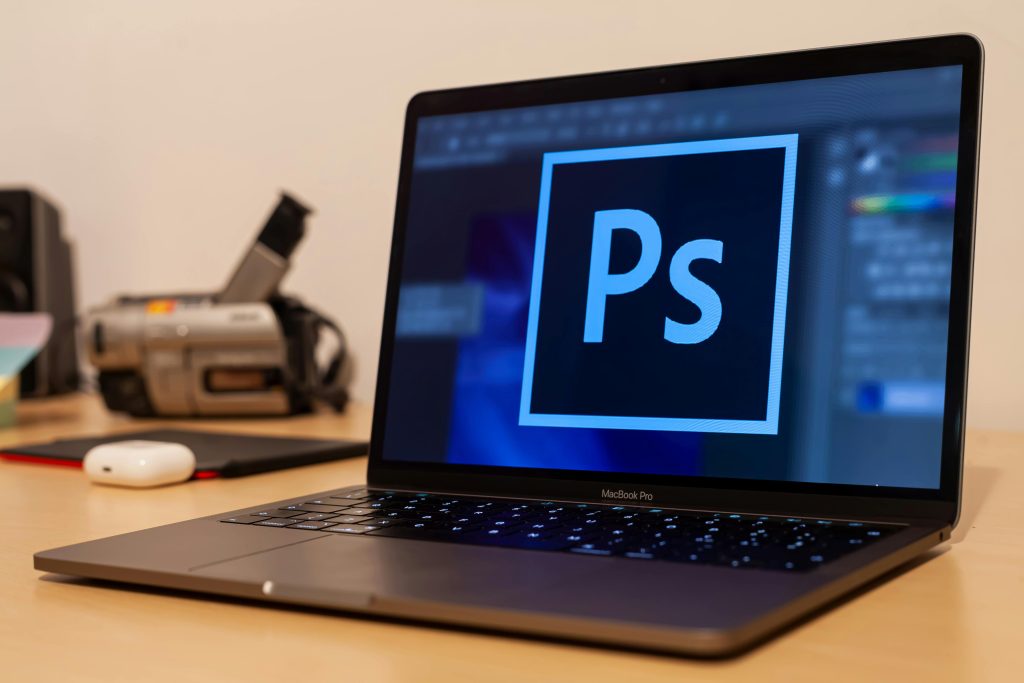You can’t miss billboards — they dominate the landscape across cities, highways, and public transportation routes. Because of their reach, it’s important for companies to design effective ads that resonate with their target audience.
That’s where Photoshop comes in.
Whether you’re a small business looking to expand your following or a well-established, nationally-recognized brand trying to engage a new demographic, Photoshop is the perfect tool for designing an ad that leaves a lasting impression. In this step-by-step guide, we’ll walk you through the process of creating your billboard ad in Photoshop completely from scratch.
Before You Design: Why a Mockup In Photoshop Matters
Research shows that out of home advertising, including billboards, delivers the highest recall rates for consumers compared to other forms of media. However, creating impactful ads begins with selecting the right software.
Over 90% of creative professionals rely on Photoshop to bring their ideas to life. It’s hard to imagine the creative world without it! Before you get started with diving into your design, you’ll need to create a mockup to help visualize how your billboard will look in real life.
Below is a sample sheet we give to advertisers we partner with to help inform their design process.

How to Create a Billboard Ad in Photoshop
- Open Photoshop and Set Up Your Canvas
- Add High-Quality Images
- Create a Simple Layout
- Add Large, Readable Text
- Incorporate Branding Elements
- Review and Test Readability
- Export your final design
Step 1: Open Photoshop and Set Up Your Canvas

The first step to designing a billboard is getting your canvas right. This means making sure your canvas size and resolution are set up properly for billboard printing. To do this:
- Open Photoshop and go to File > New.
- Set the dimensions based on the billboard specifications for your particular display(s). If you’re unsure at any point, check with the billboard provider for exact measurements.
- Set the resolution to 300 PPI (pixels per inch) to ensure a high-quality print.
- Choose CMYK color mode, which is the standard for print projects. CMYK stands for cyan, magenta, yellow, and black.
Having the correct setup from the start prevents any headaches down the line, especially when your ad is printed at such a large scale.
Step 2: Add High-Quality Images
A striking image can make or break a billboard ad. High-resolution, professional photos will elevate your design, while low-quality images can ruin the final product.
To create a visually appealing billboard, stick to just a few strong images to avoid clutter. You can find high-quality images and resources like Adobe Stock, Shutterstock, or Unsplash. Follow these steps to add high-quality images:
- Go to File > Open to choose the images for your design. Make sure they are high-resolution to avoid pixelation.
- Use the Move Tool to drag the image into your billboard canvas and position it accordingly.
- If needed, you can adjust the size of the image by going to Edit > Free Transform and dragging the corners while holding Shift to maintain proportions.
Step 3: Create a Simple Layout

A simple, well-balanced layout ensures that your design is easy to understand at a glance. Remember—you want the design to be balanced, not overcrowded. Here’s how to create a clear and impactful layout for your billboard ad in Photoshop:
- Use the Line Tool to create visual divisions if necessary.
- A simple layout might split the canvas into two sections: one for the image and one for the text. This helps keep things clean and readable.
- For additional inspiration, consider exploring a list of billboard ideas.
Step 4: Add Large, Readable Text

When designing a billboard, less is more when it comes to text. Drivers and pedestrians only have a few seconds to read it, so your message needs to be large and clear. To add large and readable text:
- First, select the Type Tool (T) and drag a text box where you want your message to appear.
- Choose a Large, Bold Font: Use sans-serif fonts like Helvetica or Arial, which are easy to read from a distance. Check out our typography in advertising post for more on fonts.
- Keep the Message Brief: Limit your text to 7-10 words. Focus on a strong slogan or call to action that captures attention.
- Ensure High Contrast: Use dark text on a light background or light text on a dark background to enhance readability.
- Adjust Letter Spacing: If necessary, modify the tracking in the Character Panel to improve clarity from afar.
5. Incorporate Branding Elements
Your billboard should clearly show your brand’s identity, such as your logo and brand colors, but don’t let the branding overshadow the main message. Your billboard’s readability should always come first. When incorporating branding elements, you should generally follow these steps:
- Position Your Logo: Place your company logo in a corner or along the bottom edge, where it won’t distract from the rest of the design.
- Add Your Logo: Open your logo file by pressing File > Open, then use the Move Tool to drag it onto your canvas.
- Blend Seamlessly: To create a more realistic look, select the logo, press CTRL+T (PC) or CMD+T (MAC) to transform it. Right-click and choose “Warp” to adjust its shape so it blends with the background image.
- Maintain Color Consistency: Stick to your brand’s color palette. Make sure the colors harmonize with other design elements, and adjust as needed using the Color Picker Tool or by adding Adjustment Layers.
6. Review and Test Readability
Zoom out of your billboard ad design to simulate how it will appear to someone driving or walking by at a distance. You can use Photoshop’s Zoom Tool to scale down your design to about 10% to get a sense of what it will look like from far away. After doing this, ask yourself:
- Is the text clear and easy to read?
- Does the design feel balanced?
- Does it capture attention?
- Is the message concise?
Make any necessary tweaks to ensure your billboard is clear, legible, and attention-grabbing.
As you review, you should also consider the following questions when examining your ad: “Does the message boost brand awareness?” or “Does it fit into a buyer persona?”
7. Export Your Final Design

When you’re satisfied with your design, it’s time to export it in the correct format for printing. You’ll need to:
- First, save your project as a PSD file for future editing.
- Go to File > Export > Quick Export and choose TIFF or PDF, depending on your printer’s specifications. TIFF files are often preferred for their high quality and ability to handle large file sizes.
- Make sure the file format meets the printer’s requirements, and double-check the resolution before sending it off.
One last thing to keep in mind—before you export your final design, ask yourself if this mockup will help you achieve your desired billboard ROI.
Need Help Designing Your Billboard Ad?
Designing a billboard ad in Photoshop is all about quick, powerful visuals and clear messaging. It can be challenging, but it doesn’t have to be.
If you’re new to Photoshop or unsure how to promote your small business, you don’t need to figure it all out alone. Whether you’re a novice or experienced in graphic design, Alluvit Media offers graphic design services at no additional cost when you partner with us.
To get started, simply fill out our quick online form, and we’ll connect you with a Media Coordinator who will send you a custom, interactive proposal. They’ll also guide you through the best options for your target area.
